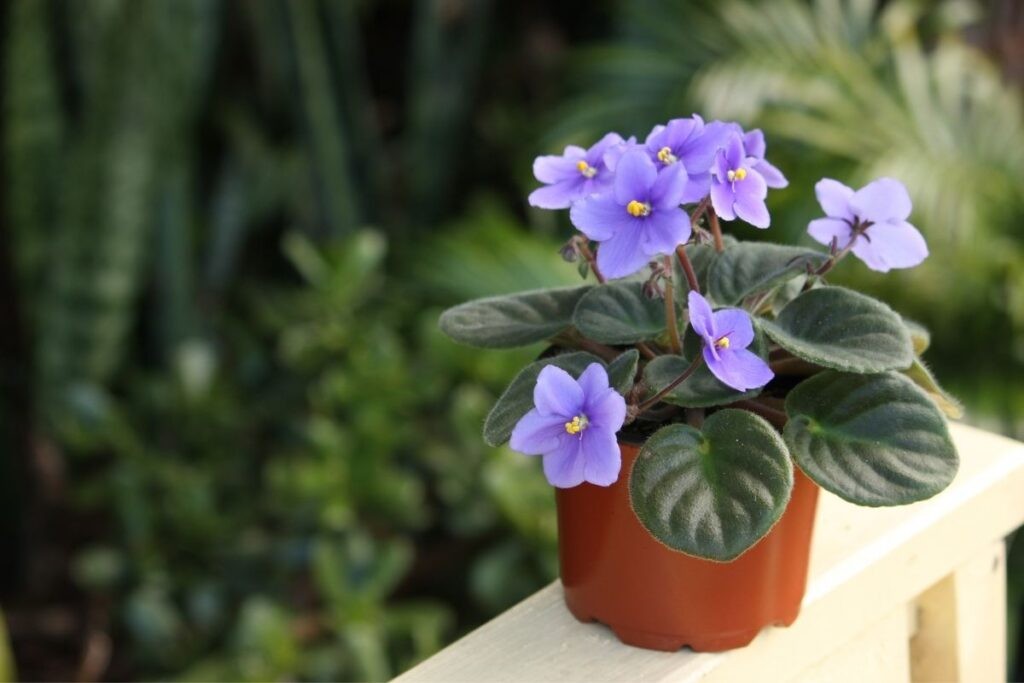To care for African violets properly, you need to repot them once or twice a year. Repotted African violets will thrive if you do this before the roots become root bound. It is better to repotted them a new pot each time than to move them to a smaller one. If necessary, you can reuse the pots after washing them. To move your African violet, choose a pot that is about one inch larger than the previous one. If you change pots too often, you risk root rot.
Table of Contents
Remove dead flowers to distract from the beauty of the new blooms
It’s easy to accidentally remove dead flowers from an African violet plant, but if they aren’t removed, the plant may be prone to diseases, including fungal infection. As a result, it’s a good idea to remove the dead flowers to ensure that your plant doesn’t become overcrowded with dead flowers and can focus more of its energy on growing new blooms.
A simple way to keep your plant in tip-top shape is to regularly check for dead flowers every few days or once a week. African violets need to be checked for dead flowers at least once a week, but they should be checked daily or even more often if they’re in bloom. In addition to checking for dead flowers, most experts recommend repotting your African violet twice a year. Martha Stewart shares her tips to repot African violets. You’ll also need special plant food and soil for your violet, so don’t forget to get your hands on some! Leave Armor is a safe insecticide that works equally well, too.
Prune excess leaves to prevent setbacks on new leaf growth
An African violet may have spent flowers and too many leaves. To prevent setbacks in new leaf growth, prune excess leaves as they form. This is a low-maintenance houseplant with an impressive reputation. However, too much water, inconsistent watering, and low indirect light can cause the leaves to wilt. This article will address some of the most common reasons for wilting leaves on African violets.
A weakened African violet may have a weak stem. Prune it with a sharp knife to expose healthy stems. You can also repotted the African violet if the old pot is too shallow. Remember to use a good aerated and well-drained growing medium. A good mix of peat and organic matter is ideal. Add a few tablespoons of fertilizer each month and water the plant every few days.
Inspect for pests
A common pest of African violets is thrips. Several species feed on the violet’s flowers and are difficult to control. These insects are tiny and can go undetected for long periods. Luckily, the presence of thrips can be detected by pollen spills. Inspect the plant for signs of these pests, and take steps to eradicate them. Listed below are some pests you should look out for on African violets.
Mealybugs are another common insect pest of African violets. This tiny, white, waxy creature feeds on the sap of the plant. It can cause stunted growth and even death of the plant. If you find mealybugs, you should apply a solution of dilute alcohol to the affected area. It is best to treat the entire plant if an infestation occurs. If the African violets are already infected, use biological control measures.
Water
When watering your African violet plant, you should keep in mind that its leaves should not be completely wet, as this could cause blight, powdery mildew, or other problems. Instead, water the plant continuously for about twenty minutes at a time. This will mimic the plant’s natural watering habits, letting air and moisture pass through. Refill the water reservoir as needed. For best results, water your African violet once a week.
To ensure that your African violet plant receives the proper amount of sunlight, place it in an east or west-facing window, where morning sun is not too hot. Rotate it by a quarter turn every time you water it. Violets grown in brighter areas will have lopsided leaves and lean toward the light. Likewise, plants placed in the south would receive harsh rays, which could damage the flowers. For optimal growth, African violets should be placed in a warm place, such as a brighter room, with indirect light.
Fertilize
In order to ensure the health of your African Violet, you need to follow the recommended fertilization schedule. An appropriate balance of nitrogen, phosphorous, and potassium is vital for the health of your plant. Imbalances in these elements can lead to drooping leaves, chlorotic foliage, and leaf tip burn. Similarly, inadequate fertilization can result in diminished flowering and decreased leaf production. To avoid these problems, you should use a fertilizer specifically designed for African violets.
Homemade fertilizers can be used to feed your African violet. Milk and juice are rich in nitrogen, phosphorus, and potassium, and you can use the leftovers to feed your African violet. Both of these ingredients can be found at grocery stores. This way, you can fertilize your African violet without wasting them. However, you should not use a time-release fertilizer, as it could result in over-fertilization.
Repot
African violets need to be repotted periodically to replenish depleted nutrients and to accommodate new growth. Because they grow at a different rate than other plants, repotting your African violet can help prevent problems such as a long leafless neck, roots that escape the drainage hole, and root boundness. To repotted African violets properly, follow these steps:
First, remove the plant from its pot. Grip the base of its lowest leaves to remove it from the pot. Next, remove the soil from the root system and repot it. Then, gently push the soil into the new pot until it reaches about half an inch below the rim of the old pot. After repotting your African violet, water it as normal. A light watering is enough, as it will require less water at first.






